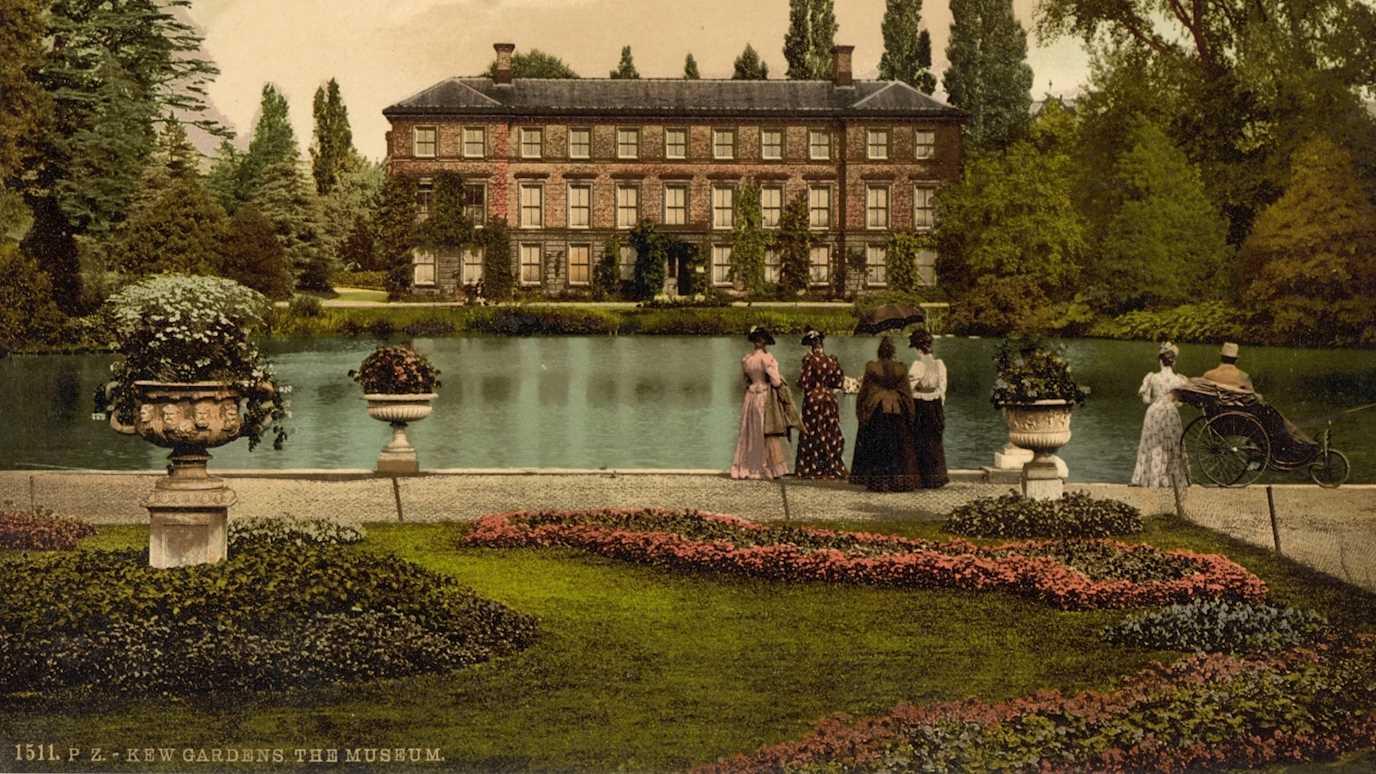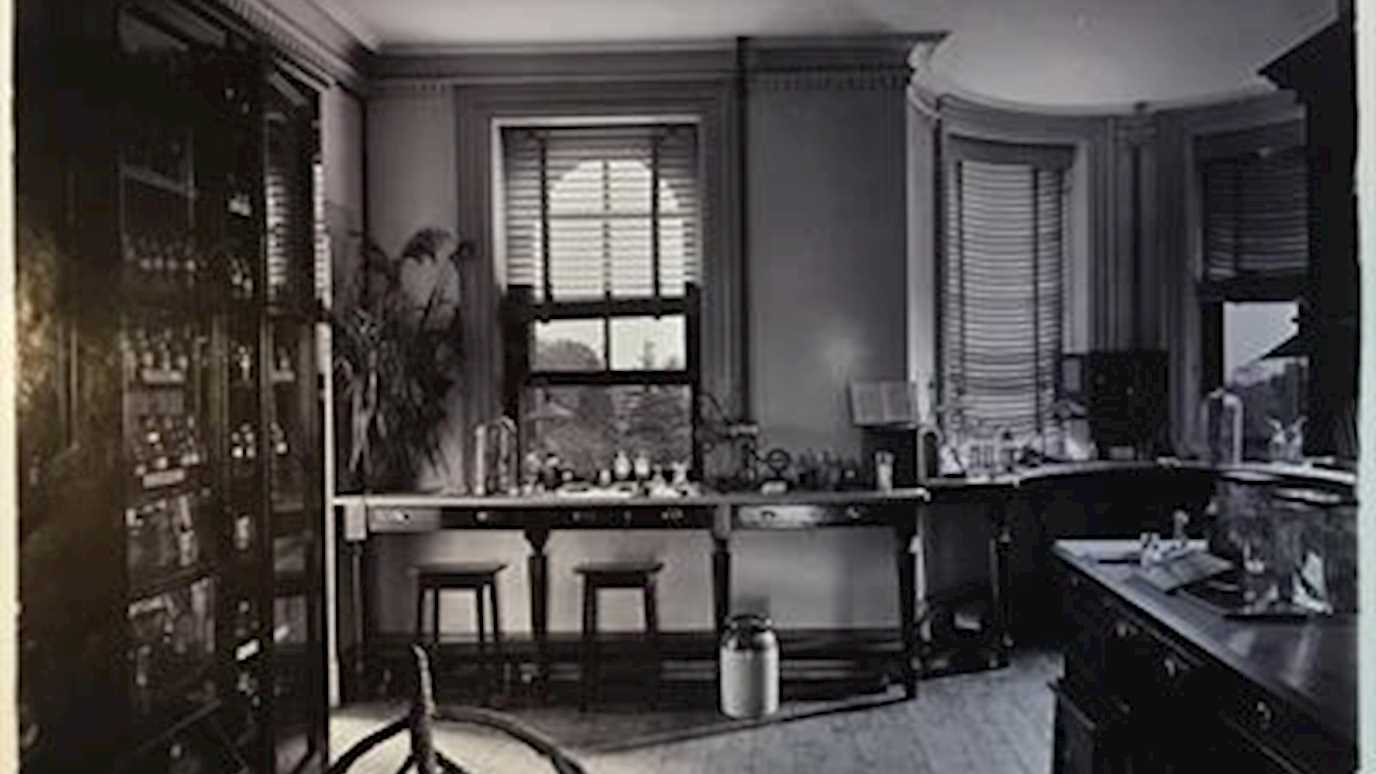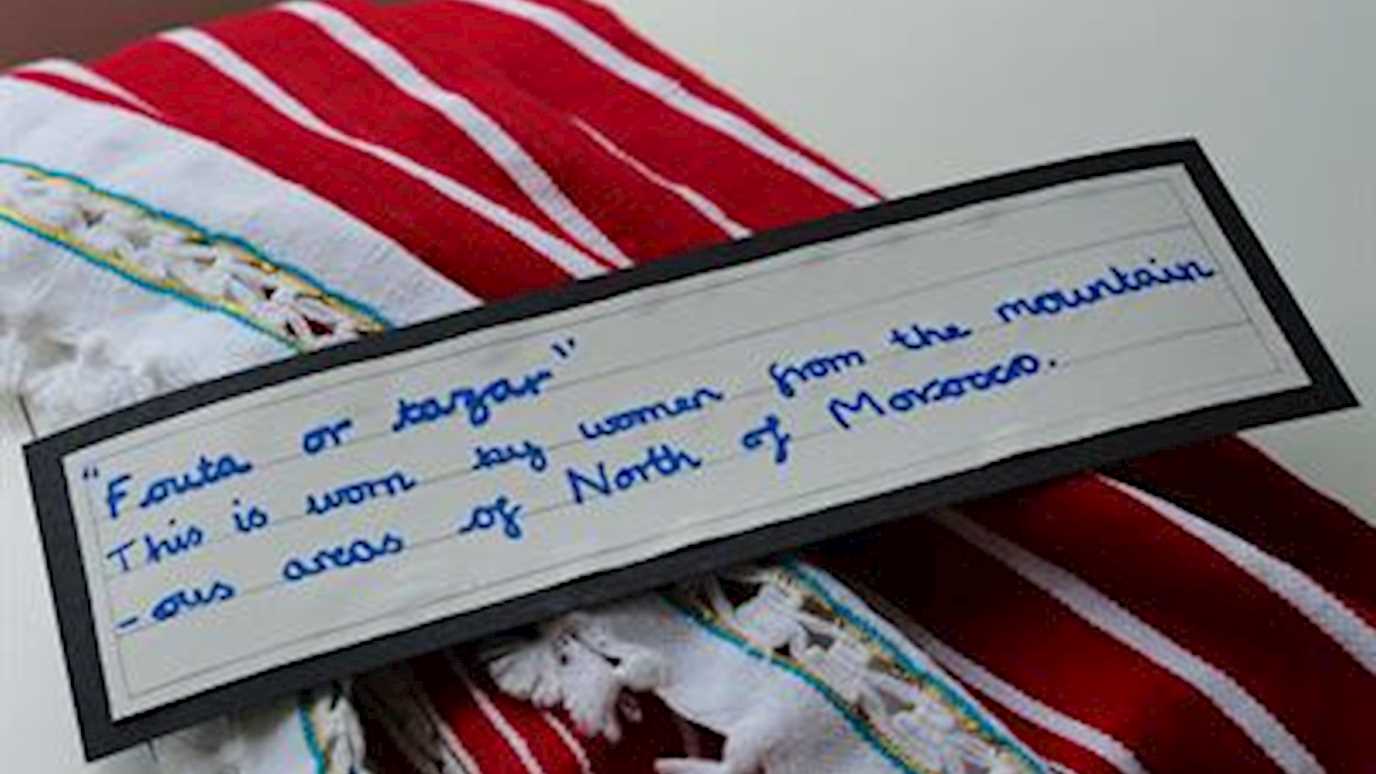Posted on 18/02/2018 by Caroline Cornish
January 2018 saw the release of our second Working Paper― “Specimens Distributed”: The Circulation of Objects from Kew’s Economic Botany Collection― which deals with the practices adopted at the Museum of Economic Botany to redistribute objects to other museums and collections. It complements Working Paper 1, which focussed on accessions into the Kew Museum. Indeed, it is the combination of processes of accession and deaccession which produce the central theme of our project, that of circulation.
Caroline Cornish and Traude Gavin examining a Dayak textile
The core focus of the Mobile Museum project is the mobility of collections. This focus is reflected in everything we do, beginning with our primary sources, notably the deaccession registers of the former Museum of Economic Botany. Such a point of departure is unusual in museum histories, as the vast majority of look primarily to accessions. The reasons for this are clear: museums tend to have a greater interest in objects currently in their own collections, and furthermore, detailed deaccessioning records can be hard to find. There are also reasons linked to current museum practice, where deaccessioning is much less a feature of collections management than in the nineteenth century.
What we have found is that objects left the Kew Museum for other destinations in a number of modes: in the form of gifts, in support of major initiatives (notably the promotion of object-centred pedagogy in schools), in inter-institutional exchanges, and as part of Kew’s acquired role of clearing house for large numbers of objects as a result of events such as museum closures, expeditions and world’s fairs. A number of key related themes have emerged in the process of researching and writing the paper: the notion of duplicates as a form of currency; secondly the practice of ‘equivalencing’; and finally the concept of a biocultural economy of objects.
The concept of the duplicate derives from natural history collecting. To extend the taxonomic and geographic reach of their collections, collectors had long accumulated duplicates for purposes of exchange, a practice which was relatively straightforward with herbarium sheets, but more complex when it was extended to cultural artefacts, as we have seen at Kew and elsewhere. To facilitate the exchange of ethnographic artefacts, curators developed a negotiated system of ‘equivalencing’ objects, a system based only indirectly on monetary values, and rather more on mutual trust and recognition of each other’s scientific and curatorial authority. That Kew could exchange with museums as diverse as the British Museum, the South Kensington Museum, and the Natural History Museum was due to the biocultural nature of the Kew collections, consisting of plant parts, plant derivatives and made objects. Many museums had differing interests in the same sorts of objects, and collectively they traded in a biocultural economy of objects—not a commercial market (although there were commercial dealers at this time)—but one in which shared notions of the relative values of objects emerged, and in which exchange was the prevalent mode of transaction.
Working Paper 2 has been made possible by the ongoing work of transcribing the Kew Museum’s ‘specimens distributed’ or ‘exit’ books which has enabled the construction of a working database that in its final form will enable researchers to trace the journeys of objects across time and space.
























